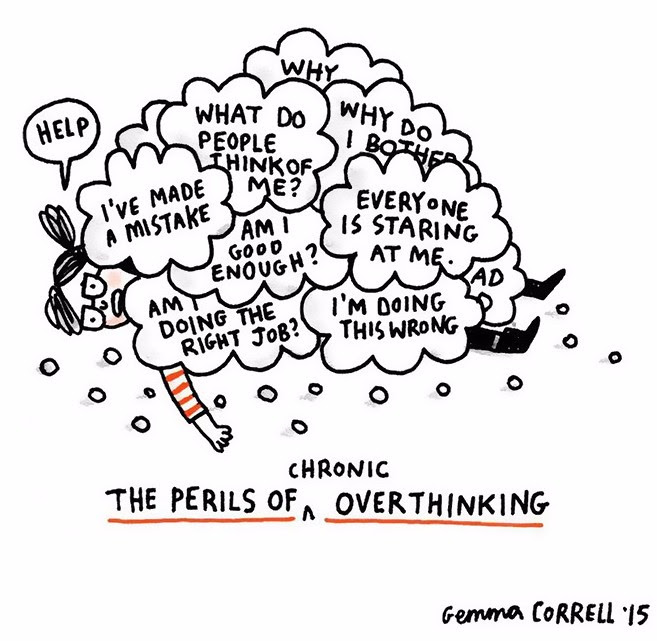Teenage Anxiety and its Prominent Role in Society
Artist Gemma Correll created a comic series in which this image was shown to depict what it is like to live with anxiety and depression.
November 26, 2017
A scary new epidemic has rooted itself in our society. It can’t be seen, its symptoms are almost impossible to define, and no blood tests or physical exams can be done to obtain an official diagnosis.
It’s called anxiety.
Despite what many might think about this illness, it is much different than the nervous feeling one experiences before a test or the jitters that occur during a scary movie. Actual anxiety disorders can be debilitating to those they affect, and although the word itself has lost almost all meaning due to its frequent use, it actually poses a great threat to many teenagers around the globe.
Generalized Anxiety Disorder is a mental illness characterized by constant nervousness that impact normal functioning, fatigue, trembling, and racing thought, among other things. According to The Anxiety and Depression Association of America, it affects one in eight children, and over 80% of these children do not get the treatment they so desperately need. This proves especially concerning since that kids with anxiety often receive poor grades, engage in substance abuse, and miss out on the many milestones teenagers typically anticipate.
Anxiety is especially susceptible to teens due to mood swings, peer pressure, grades, time management, and homework. High school can be a very confusing and stressful time for most kids because it’s a time to figure out who they are and what they want to do with their lives.
When asked about what stressors most teens face, senior Rebecca Pallant responded, “School, parents, and social media. School because there’s a lot of work and teachers and parents put on pressure for good grades. Social media can also stress people out because kids our age are constantly checking it for social validation, like depending on how many likes or followers you have.”
This definitely seems true among students here at Hingham High School as social media grows more important in everyday life and since talent and intelligence are valued and cultivated at this school.
Another concerning issue surrounding this illness is how incorrectly people view it and the many misconceptions associated with the name. Today, stigmas around mental illness still remain present, and many people connect it to the word “crazy,” a very hurtful label for those who may be suffering.
This societal label may also contribute to the reason why many people who struggle do not get help-because they are ashamed and scared of what others will think of them. They may also neglect to see a therapist or psychiatrist when in reality that is exactly what they need, especially in the case of young teenagers who desperately need guidance.
Although anxiety carries with it a large misconception, many communities embrace it, and schools foster a good environment in which to prevent and recognize mental illness. As for Hingham High School, there are many options for emotional support between guidance counselors, psychologists, freshman advisory, ADL, S.A.D.D, and peer mediation; there is always a place where students can find help.
These topics are also covered in health class for most students starting in eighth grade to educate them on anxiety and other disorders often paired with this issue. This preparation helps them become more understanding and educated on these topics that arise very early at their age. However, many students at HHS argue that the lessons taught at the high school are highly ineffective, and that the staff rarely focuses on the importance of good mental health.
Recently, freshman Anna Wagner was asked about whether not Hingham Public Schools did an adequate job informing its students about good mental health habits and ways to manage stress. Anna shared her opinion, stating, “Honestly, I feel like they don’t focus on it as much as they should. They have an entire class dedicated to physical education, but there is no in-depth class that specifically educates us on regulating stress or recognizing mental illness. I wish there was something more like that because I believe it is equally important.”
Rebecca Pallant agreed, adding, “ I definitely feel like the school could do a better job of teaching kids about when stress becomes too much, and when people should get help.”
Although most schools like to proclaim that they do an exceedingly good job on informing students of issues such as anxiety, depression, and self-harm, the system in which these lessons are executed obviously need to be improved or updated.
Overall, anxiety is a disorder that should not be neglected, and it continues to affect young teens at an increasing rate. People need to become more understanding and educated about this very common mental illness, so that one day, as a society, we can break the stigma surrounding anxiety and other important mental health issues as they begin to affect more and more people every day.

































